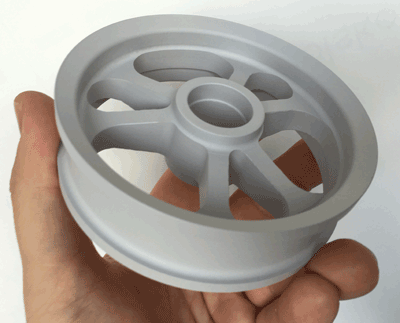 Magnesium alloys are characterized by lower corrosion resistance, therefore, in some applications it is necessary to apply a protective layer against oxidation. With the available anti-corrosion coatings on magnesium alloys, plasma electrolytic oxidation achieves the best anti-corrosion effects as well as enhanced hardness and aesthetically appearance.
Magnesium alloys are characterized by lower corrosion resistance, therefore, in some applications it is necessary to apply a protective layer against oxidation. With the available anti-corrosion coatings on magnesium alloys, plasma electrolytic oxidation achieves the best anti-corrosion effects as well as enhanced hardness and aesthetically appearance.
The microplasma oxidation method was developed in the middle of last century, but increased interest was gained in the 1980s. Initially has been used in the aerospace industry, where it is used to cover light magnesium alloys. It is currently one of the recommended electrochemical surface treatment processes due to the non-use of toxic compounds or concentrated acids. Due to preparation of the conversion layer, very good adhesion to the substrate and corrosion resistant coatings is obtained. The layer becomes an integral part of the base material and exhibits dielectric properties. Magnesium, aluminum, titanium and their alloys are materials that can be covered by PEO method. During the increment of the coating 50% of the material of the layer is formed from the electrolyte and another 50% of the substrate material. The outside surfaces are porous, making them ideal for further painting. After the glowing oxidation method, the coating can be chemically sealed, giving it even better physicochemical properties.
Corrosion resistance in salt spray:
Magnesium - increases the corrosion resistance from 500 up to 1000 hours;
Aluminum - over 2000 hours;
Hardness of the coating:
Magnesium - from 300 HV to 600 HV - depending on the thickness;
Aluminum - 3 times higher hardness than that achieved through hard anodizing - up to 2000 HV;
Abrasion and scratch resistance:
Coatings have shown better abrasion resistance than hard anodising, electroless nickel plating, or ceramic sputtering by combining hardness and deformability of the coating. They feature excellent adhesion to the substrate and a high proportion of Al2O3 crystalline phases. In addition, we are able to add hard particles (SiC, B4C or other) to the coating, or improve the lubricity of the coating.
Resistance at elevated temperature:
Coatings do not change their properties up to 500°C, they are very stable even to the point of softening the substrate.
Coating thickness:
For magnesium and aluminum as standard up to 50 microns, however, it is possible to obtain a thickness of up to 200 microns.
Applications:
PEO can cover all alloys of aluminum, magnesium or titanium. We have also technology for Al-Si alloys. The PEO process is used in the aerospace, automotive, engineering, chemical and even defense industries. There is no any limits to the shape of the elements. They can be near net shape castings, profiles, sheets, tubes or cables.
Environmental Protection:
For our company, environmental protection is a high priority. Coatings are obtained from alkaline solutions, where the concentration of ingredients is very low. Solutions do not contain any hazardous elements, heavy metals such as chromium or any toxic compounds.






